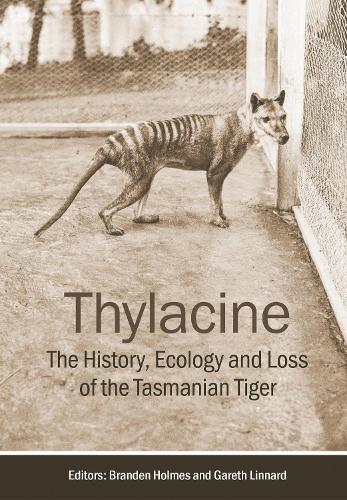
Thylacine: The History, Ecology and Loss of the Tasmanian Tiger
(Paperback)
Publishing Details
Thylacine: The History, Ecology and Loss of the Tasmanian Tiger
By (Author) Branden Holmes
Edited by Gareth Linnard
CSIRO Publishing
CSIRO Publishing
1st March 2023
Australia
Classifications
Tertiary Education
Non Fiction
Endangered species and extinction of species
599.27
Physical Properties
Paperback
240
Width 170mm, Height 245mm, Spine 14mm
785g
Description
Thylacine: The History, Ecology and Loss of the Tasmanian Tiger is a comprehensive exploration of this unique animal. Until the mid-20th century, the thylacine was the worlds largest carnivorous marsupial, and its disappearance has left many questions and contradictions.
Alternately portrayed as both a scourge and high value commodity, the thylacines ecology and behaviour were known only anecdotally. In recent years, its taxonomic position, ecology, behaviour and body size have all been re-examined scientifically, while advances in genetics have presented the potential for de-extinction.
With 78 contributors, this exciting work presents an accurate, evidence-based profile of the thylacine, examining its ecology, evolution, encounters with humans, persecution, assumed extinction and its appearance in fiction. The final chapters explore the future for this iconic species a symbol of extinction but also hope.
Reviews
"A newly published book has provided fresh perspectives on the thylacine, delving into everything from de-extinction efforts to the role of the internet in boosting the cultural profile of the extinct species. Thylacine: The History, Ecology and Loss of the Tasmanian Tiger, published by CSIRO, features the work of 78 contributors and is purported to be the first major summary of the available evidence relating to the carnivorous marsupial in 20 years." -- Rob Inglis * Herald Sun *
Author Bio
Gareth Linnard is a researcher who primarily specialises in the historical trade in thylacines during the 1920s and 1930s. Based in South Wales, UK, he co-authored a revision of the identity of the last captive thylacine. Branden Holmes is a thylacine researcher who studies the earliest period of Europeanthylacine interactions and the resulting misperceptions. He jointly re-discovered the last known moving images of the species.
